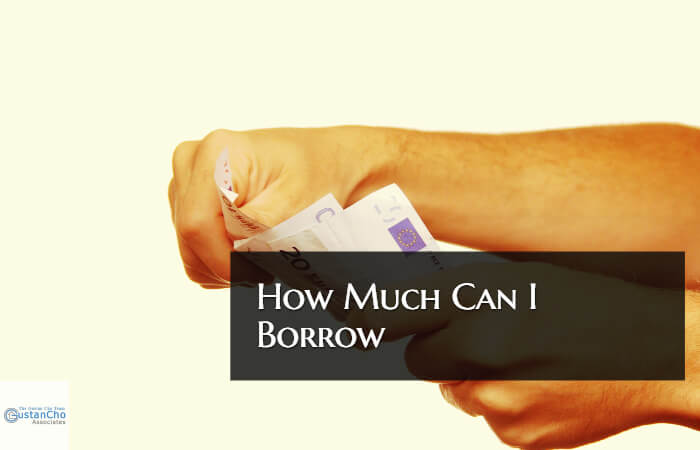How Much House Can I Afford Versus Qualify

This guide covers the frequently asked question of how much house can I afford versus qualify. Homebuyers, especially first-time home buyers, often ask, ” How much house can i afford” before looking for a home. How much house can I afford is very different than how much can I qualify.
Homebuyers need to know the maximum home loan amount the mortgage lender is willing to lend them. Two main considerations are how much house can I afford versus how much I can qualify.
Equally as important is they also need to consider whether the monthly payments are affordable for the new homeowner. Just because a mortgage lender is willing to lend them X dollars does not mean they will be comfortable with X amount of housing payments. The lender assumes how much house they can afford. It is not the mortgage underwriter’s scope of work on the actual amount of how much house they can afford depending on their lifestyle.
How Do Lenders Qualify How Much House Can I Afford
Mortgage Underwriter’s main concern for borrowers is how much they can I afford. Oftentimes, home buyers will capitalize on the maximum amount the lender is willing to lend them. Homebuyers often regret that they barely get by after they close their new home.
The front-end debt-to-income ratio is also known as the housing ratio. The front-end debt-to-income ratio is calculated by adding the principal, interest, taxes, and insurance (Often called PITI) and dividing it by your monthly gross income.
Mortgage lenders do not take expenses such as entertainment expenses, child care, utilities, and other monthly expenses not listed on the mortgage application, so what a mortgage lender states on how much home you can afford is different than how much home you can afford with your existing lifestyle.
Mortgage Lenders Formula On How Much House Can I Afford For My Home Purchase
Mortgage loan underwriters use a specific formula in calculating how much I can borrow on a home loan. The mortgage loan originator will tell borrowers the maximum loan amount they can qualify for before issuing a pre-approval letter.
Now that we have clarified the front-end debt-to-income ratio and the back-end debt-to-income ratio, you can figure out your question of ” How much can I borrow?”. The lender will calculate how much the maximum mortgage payment can be.
The formula mortgage lenders use called the debt-to-income ratio. There are two debt-to-income ratios mortgage lenders go by. The first is the front-debt-to-income ratio, and the second is the back-end debt-to-income ratio.
Front-End Debt-To-Income Ratio On How Much Can i Borrow
The PITI, principal, interest, tax, and insurance, is the front debt-income ratio. For example, if the sum of your principal, interest, taxes, and insurance is $1,000 and your monthly gross income is $4,000, then if you take your housing payment of $1,000 and divide it by your monthly gross income of $4,000, you front end debt to income ratio is at 25%.
The maximum front-end debt-to-income ratio allowed for FHA loans if your credit scores are over 620 is 46.9%. The maximum front-end debt-to-income ratio allowed for FHA loans if your credit scores are under 620 is 31%.
Conventional loans go off the back-end debt-to-income ratios, which are 50%. However, the minimum credit score required to qualify for a conventional loan is 620. You can qualify for an FHA loan with credit scores as low as 500. However, for home buyers seeking an FHA loan with credit scores between 500 and 579, a minimum 10% down payment is required. To qualify for a 3.5% down payment FHA loan, you need a minimum credit score of 580 or higher.
How much House Can I Afford with my Income
The back-end debt-to-income ratio is the sum of your housing payment plus all other minimum monthly payments that are reflected on the credit report and dividing this sum by gross monthly income. For example, let’s use the top example where the monthly PITI is $1,000.
If the monthly housing principal, interest, taxes, and insurance payment is $1,000, have a car payment of $250.00. Have student loans of $250.00. Have child support of $250.00. Have motorcycle payment of $250.00.
Total monthly minimum payments are calculated at $2,000.00 per month. Taking a total monthly minimum payment of $2,000.00 per month and dividing it by a gross monthly income of $4,000.00 yields 50%. The 50% number is the debt-to-income ratio.
How my lender will decide how much House I can afford
The maximum you can borrow on a conventional loan will be based on a maximum debt-to-income ratio of 50%. Monthly housing payment is determined not just by the loan amount. But also by property taxes, insurance, and mortgage insurance. Here is a case scenario if the monthly gross income is $4,000.00.
The maximum debt-to-income ratio borrowers can have is 50% on conventional loans. Fannie Mae and Freddie Mac does not have a maximum front-end debt-to-income ratio cap.
This means that the monthly budget with the proposed new housing payment cannot exceed 0.50% X $4,000.00, which yields $2,000.00 per month. Let’s say the following expenses are in this case scenario. The property taxes are $100.00 per month. The homeowners’ insurance is $100.00. The net mortgage principal and interest payment is $1,600.00. A $1,600.00 monthly principal and interest mortgage payment at a 4.25% 30-year fixed rate term equals a $325,000 loan amount.
How Much house can i afford to buy
The maximum loan amount the borrower will qualify for is $325,000, with no other minimum monthly payments but just the proposed housing payment. The front-end debt-to-income ratio requirement on FHA loans is 46.9%, and back end debt-to-income ratio cap is 56.9% to get an AUS approval:
For FHA loans, the maximum front-end debt-to-income ratio permitted is 46.9%, and the maximum back-end debt-to-income ratio permitted is 56.9% to get an approve/eligible per Automated Underwriting System.
This applies if borrowers’ credit scores are 620 or greater. Many lenders have overlays on debt-to-income ratios and credit scores. Make sure the mortgage lender has no own mortgage lender overlays. If credit scores exceed 620, the maximum debt-to-income ratio is normally capped at 43% to get an approved/eligible per Automated Underwriting System Approval.
How Much i qualify does not mean how much house i can afford
 Just because a mortgage lender will tell borrowers how much can I qualify does not mean how much house can I afford what the mortgage lender qualifies for. Mortgage lenders do not know borrowers’ lifestyle. They also do not calculate the monthly budget for the following:
Just because a mortgage lender will tell borrowers how much can I qualify does not mean how much house can I afford what the mortgage lender qualifies for. Mortgage lenders do not know borrowers’ lifestyle. They also do not calculate the monthly budget for the following:
- utility payments
- childcare
- entertainment allowance
- annual vacation expenses
- tuition if going to school
Homeowners also need to consider that being a homeowner comes with more financial responsibilities than being a renter. Homeowners need reserves if the HVAC system breaks down, needs a new well, needs a new roof, or needs any other repairs. Homeowners will need reserves for a rainy day.






